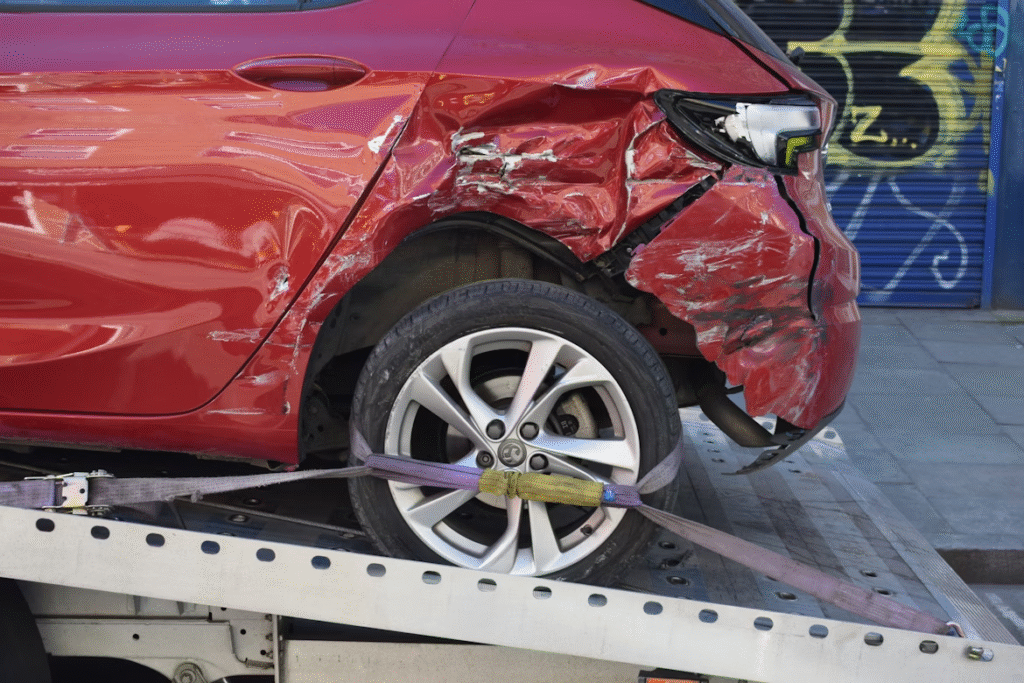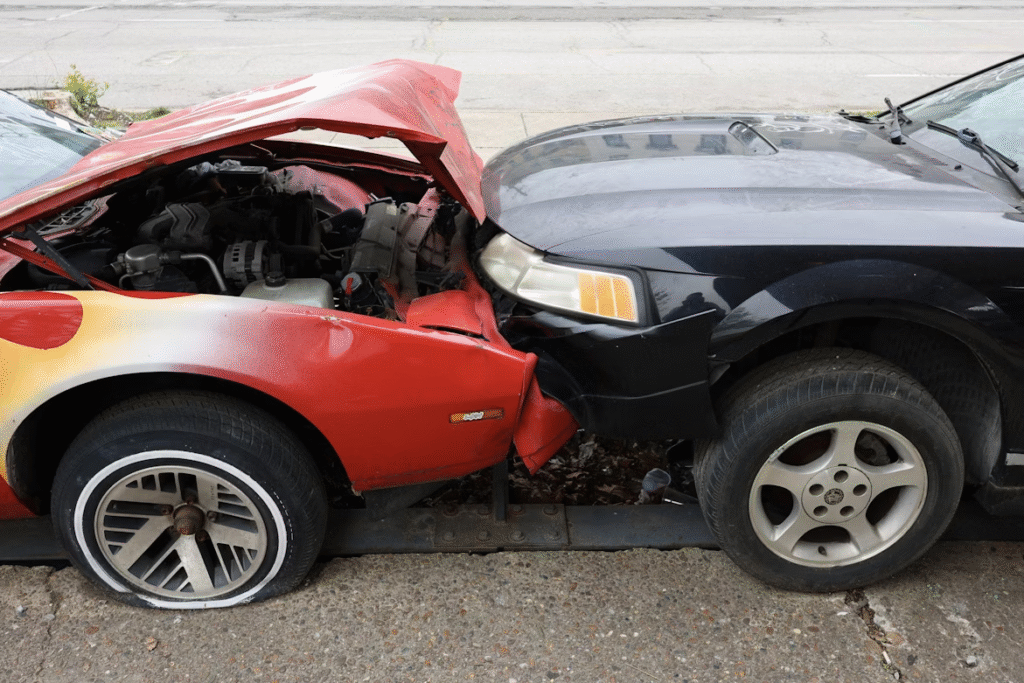
Rear-end collisions are among the most frequent types of car accidents in Palm Bay. From the morning commute down Malabar Road to heavy traffic near Palm Bay Road, these accidents can happen in the blink of an eye—and the consequences are often more severe than people realize.
Many assume the rear driver is always at fault in these crashes. While that’s often true, Florida’s laws leave room for exceptions. In some cases, the driver in front may have contributed to or even caused the accident through reckless or unpredictable behavior.
If you’ve been involved in a rear-end crash, understanding how liability is determined can protect your right to fair compensation. A personal injury lawyer serving Palm Bay can help you understand your legal options and pursue a claim that reflects the true circumstances of the crash.
Frequent Causes of Rear-End Collisions in Palm Bay
Rear-end collisions in Palm Bay often share the same root causes—driver inattention and limited reaction time. As the city continues to grow, so does the congestion on local roads, which increases the likelihood of sudden-impact crashes.
One of the leading culprits is distracted driving. Whether a driver is texting, fiddling with a navigation app, or adjusting the radio, even a one-second lapse can result in a crash. Tailgating is another significant issue, particularly during rush hour when traffic is congested and drivers are impatient. Following too closely gives drivers little room to stop safely when the vehicle ahead suddenly slows.
Alcohol and speeding also play significant roles. A driver impaired by drugs or alcohol, or simply going too fast for traffic conditions, is more likely to slam into the back of a slower-moving or stopped vehicle. Weather conditions, such as heavy rain common during Florida summers, also reduce visibility and stopping distance.
Finally, mechanical issues—like non-functioning brake lights or worn-out brakes—can make it difficult for trailing drivers to react in time. Many of these accidents are preventable, but all must be evaluated on a case-by-case basis to determine fault.
Florida’s Laws on Rear-End Accident Liability
In Florida, liability in rear-end collisions is determined under the state’s modified comparative negligence system. This means that faults can be shared among drivers, and compensation may be reduced based on each party’s level of responsibility. If you’re found to be more than 50% at fault, you may be barred from recovering damages altogether.
While the rear driver is typically presumed to be at fault, that presumption can be rebutted. For instance, if the driver in front stopped suddenly without a valid reason, or if their brake lights weren’t working, a court may assign partial or full fault to the front driver. This legal flexibility reflects the real-world complexity of many rear-end accidents.
Florida courts and insurance companies will look at the specific actions of both drivers, the road conditions, and the available evidence. Simply being the driver in the back doesn’t automatically make you liable. A strong legal case can successfully demonstrate shared or shifted responsibility.
When the Front Driver May Be at Fault

Although the rear driver is often blamed in these types of accidents, there are valid situations in which the front driver may be partially or fully at fault. For example, if a driver abruptly changes lanes and cuts in too closely without signaling, it can leave the trailing driver with no time to react. Similarly, slamming on the brakes for no apparent reason or reversing into another vehicle—such as in a parking lot—can shift fault.
Another overlooked cause is non-functioning brake lights. If the driver in front fails to maintain their vehicle and the brake lights are out, the driver behind them may not realize they’ve slowed or stopped until it’s too late.
Florida law allows for comparative faults in these cases, meaning compensation may be adjusted based on how much each party contributed to the crash. Establishing front-driver negligence can be challenging, which is why it’s so important to gather evidence immediately and consult legal help early on.
How to Prove Fault After a Rear-End Crash
Proving fault in a rear-end collision isn’t always as simple as it seems. Insurance companies may default to blaming the rear driver, but that doesn’t mean their decision is final. What matters most is the quality of the evidence.
Photographs of vehicle damage, skid marks, and traffic signs can paint a picture of what happened. Eyewitness statements and dashcam footage are especially helpful in disputes over sudden braking or unsafe lane changes. Police reports that mention improper behavior, such as distraction, intoxication, or mechanical violations—can also influence liability findings.
In some cases, accident reconstruction experts may be brought in to analyze how and why the crash occurred. They evaluate vehicle positioning, speed, and point of impact to determine whether the crash could have been avoided.
A skilled personal injury lawyer serving Palm Bay can coordinate the gathering of this evidence and build a compelling claim to support your side of the story.
Steps to Take After a Rear-End Collision in Palm Bay

Immediately after a rear-end accident, your first priority should be safety and medical attention. Even if injuries seem minor, seek care right away, as symptoms can develop later. Prompt medical records help establish a connection between the accident and your injuries.
If possible, take photos of the accident scene, vehicle damage, road conditions, and any visible injuries. Exchange information with the other driver, and request contact details from witnesses. Make sure to file a police report, it will serve as an official record of the incident.
Notify your insurance company but avoid providing a detailed recorded statement until you’ve spoken with an attorney. Insurance adjusters may try to assign fault quickly or pressure you into accepting a low settlement.
Working with a personal injury lawyer ensures you understand your rights and that no detail is overlooked during the first critical stages of your claim.
Don’t Assume You’re at Fault—Or Not at Fault
Rear-end collisions may seem straightforward, but in reality, they can involve multiple layers of fault and legal nuance. Whether you’re the rear driver or the one hit from behind, don’t assume you automatically know how fault will be determined.
A personal injury lawyer serving Palm Bay can help investigate your case, identify liable parties, and pursue the full compensation you deserve. Missing Palm Bay’s statute of limitations can prevent you from recovering. Frankl Kominsky Injury Lawyers can help you act in time. With the right legal strategy, even a presumed fault can be contested—and overturned.
About the Author
This article was written by a legal content writer with extensive experience in Florida traffic laws, negligence claims, and personal injury litigation. The author focuses on helping everyday drivers understand their legal rights and provides accessible guidance on complex legal issues—especially when liability isn’t as clear as it seems.